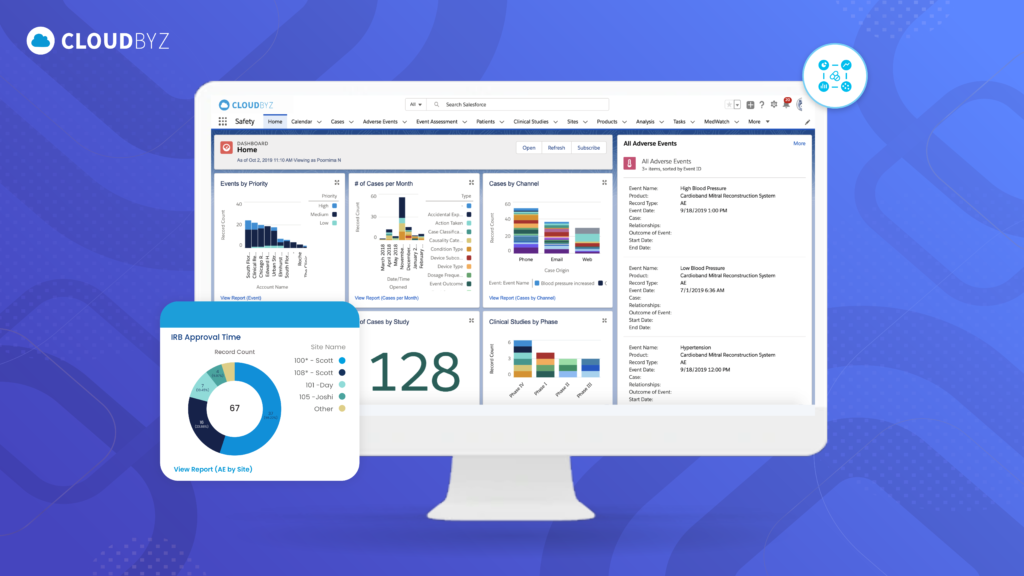
1. Define Clear Objectives and Requirements
Defining clear objectives and requirements is the cornerstone of a successful drug safety solution implementation. It begins with a deep understanding of the organization’s strategic goals, regulatory obligations, and operational needs. This process involves not only identifying what the organization aims to achieve—such as improved regulatory compliance, enhanced adverse event management, or better integration with existing systems—but also understanding the specific pain points and challenges that the solution must address. For instance, an organization might struggle with disparate data sources or manual processes that are prone to errors. By clearly outlining these challenges and aligning them with the organization’s broader goals, you can ensure that the chosen solution addresses these issues effectively.
Moreover, defining requirements is a collaborative process that should involve input from all relevant stakeholders, including pharmacovigilance teams, IT, regulatory affairs, and senior management. Each of these groups will have unique perspectives and needs that must be considered to create a comprehensive set of requirements. This collaborative approach not only ensures that the solution is aligned with the organization’s needs but also fosters a sense of ownership among stakeholders, which can be crucial for the success of the implementation. Detailed documentation of these objectives and requirements will serve as a reference point throughout the project, helping to guide decisions and measure success.
2. Engage Stakeholders Early and Often
Engaging stakeholders early in the implementation process is vital to ensuring the success of a drug safety solution. Stakeholders from various departments, such as pharmacovigilance, IT, regulatory affairs, and legal, each have unique insights and requirements that must be considered. By involving them from the beginning, you can gather critical input that will shape the project’s direction and help identify potential challenges before they arise. Early engagement also helps build a sense of ownership and commitment among stakeholders, making them more likely to support the implementation process and contribute to its success.
Frequent and transparent communication is essential throughout the implementation process. Regular updates on the project’s progress, including milestones, challenges, and next steps, should be shared with all stakeholders. This continuous engagement ensures that everyone remains aligned and that any concerns are addressed promptly. Additionally, establishing a cross-functional project team with representatives from each stakeholder group can facilitate collaboration and ensure that all voices are heard. This team should meet regularly to discuss progress, resolve issues, and make decisions, ensuring that the implementation stays on track and meets the organization’s needs.
3. Choose the Right Technology Partner
Selecting the right technology partner is one of the most critical decisions in the implementation process. The chosen partner should offer a drug safety solution that is not only robust and scalable but also capable of adapting to the unique needs of your organization. This involves evaluating potential partners based on their experience in the pharmaceutical industry, their understanding of regulatory requirements, and their ability to deliver a solution that aligns with your organization’s goals. It’s also important to assess the partner’s track record with similar implementations—look for customer testimonials, case studies, and references that demonstrate their ability to deliver on their promises.
Beyond technical capabilities, the technology partner should also provide comprehensive support throughout the implementation process and beyond. This includes offering training, assisting with data migration and system integration, and providing ongoing technical support. A strong partnership is built on trust, communication, and mutual understanding. Regular check-ins, clear documentation, and a collaborative approach to problem-solving are essential for maintaining a productive relationship. By choosing a partner who is committed to your success and willing to work closely with your team, you can ensure that the implementation process goes smoothly and that the drug safety solution delivers the desired outcomes.
4. Plan for Data Migration and Integration
Data migration is a critical component of any drug safety solution implementation, as it involves transferring existing data from legacy systems into the new platform. This process must be meticulously planned to ensure data integrity, accuracy, and completeness. Before migration begins, a thorough data audit should be conducted to identify all relevant data sources, assess data quality, and determine any necessary data cleansing or transformation activities. This audit will help to ensure that only high-quality, relevant data is migrated, reducing the risk of errors and inconsistencies in the new system.
Integration with existing systems is equally important. A comprehensive drug safety solution must be able to communicate seamlessly with other critical systems, such as clinical trial management systems (CTMS), electronic health records (EHRs), and enterprise resource planning (ERP) systems. This integration enables the efficient flow of data across the organization, reducing manual data entry, minimizing errors, and ensuring that all relevant information is available to pharmacovigilance teams when they need it. To achieve successful integration, it’s important to map out the data flows between systems, identify any potential integration challenges, and work closely with both your technology partner and internal IT teams to develop and test the integration processes. Proper planning and execution of data migration and integration are crucial to ensuring that the new drug safety solution functions effectively and meets the organization’s needs.
5. Focus on User Training and Change Management
User training and change management are critical components of a successful drug safety solution implementation. Even the most advanced and well-designed system will fail if users do not understand how to use it effectively. A comprehensive training program should be developed to address the specific needs of different user groups, including pharmacovigilance professionals, IT staff, regulatory affairs teams, and senior management. This training should cover all aspects of the system, from basic navigation to advanced features and functionalities, ensuring that users are confident and competent in using the new solution.
Change management is equally important in helping users transition from old processes and systems to the new drug safety solution. Resistance to change is a common challenge in any implementation, and it’s essential to address this proactively. This can be achieved through clear communication about the benefits of the new system, involving users in the implementation process, and providing ongoing support to help them adapt to new ways of working. By fostering a positive attitude toward change and providing the necessary resources and support, you can ensure that the transition to the new drug safety solution is smooth and successful.
6. Ensure Regulatory Compliance and Validation
Regulatory compliance is a fundamental requirement for any drug safety solution, and ensuring that the chosen solution meets all relevant regulations is critical to its success. This involves not only configuring the system to comply with current regulations but also validating that it performs as intended. Validation is a rigorous process that includes user acceptance testing (UAT), performance testing, and detailed documentation of all validation activities. This ensures that the system is functioning correctly and that it meets the stringent requirements set by regulatory bodies such as the FDA, EMA, and others.
Ongoing regulatory compliance requires continuous monitoring and updates to the system as regulations evolve. Working closely with your technology partner to stay informed of regulatory changes and ensure that the solution is updated accordingly is essential. Additionally, maintaining thorough documentation of all compliance activities, including validation records, training logs, and system configurations, is crucial for demonstrating compliance during audits and inspections. By prioritizing regulatory compliance and validation throughout the implementation process, you can minimize the risk of non-compliance and ensure that the drug safety solution meets the highest standards of quality and performance.
7. Monitor and Optimize Post-Implementation
The implementation of a drug safety solution is not a one-time event; it requires ongoing monitoring and optimization to ensure it continues to meet the organization’s needs and adapt to changes in the regulatory environment. This involves establishing key performance indicators (KPIs) that allow you to measure the effectiveness of the solution and identify any areas for improvement. Regular system audits, user feedback sessions, and performance reviews should be conducted to assess how well the system is functioning and to identify any potential issues or opportunities for enhancement.
Optimization efforts should be focused on continuously improving the system’s performance, usability, and compliance with regulatory requirements. This may involve making configuration changes, updating workflows, or integrating new features and functionalities as they become available. Working closely with your technology partner to stay informed about updates and best practices is essential for maintaining the system’s effectiveness over time. By taking a proactive approach to monitoring and optimization, you can ensure that the drug safety solution remains a valuable asset to the organization and continues to deliver on its promise of enhanced safety and regulatory compliance.
8. Foster a Culture of Continuous Improvement
In the ever-evolving field of pharmacovigilance, fostering a culture of continuous improvement is essential for staying ahead of industry trends, regulatory changes, and technological advancements. This involves encouraging ongoing learning and development among pharmacovigilance professionals, as well as regularly reviewing and updating processes, workflows, and system configurations to ensure they align with best practices. A commitment to continuous improvement helps organizations remain agile and responsive to new challenges and opportunities, ensuring that their drug safety solutions continue to meet the highest standards of quality and effectiveness.
Continuous improvement also involves fostering collaboration and knowledge-sharing among stakeholders, both within the organization and with external partners. By creating a culture that values innovation, feedback, and open communication, organizations can drive ongoing improvements in their drug safety processes and systems. This collaborative approach not only enhances the effectiveness of the drug safety solution but also helps build a strong foundation for future success. By embracing continuous improvement as a core value, organizations can ensure that their drug safety solutions remain at the cutting edge of the industry, delivering better outcomes for patients, regulatory compliance, and overall business performance.
Conclusion
Implementing a comprehensive drug safety solution is a complex and challenging process, but by following these best practices, organizations can set themselves up for success. From defining clear objectives and engaging stakeholders to selecting the right technology partner and ensuring regulatory compliance, each step of the process is critical to achieving a successful implementation. By focusing on user training, change management, and continuous improvement, organizations can ensure that their drug safety solutions remain effective and responsive to changing needs. With the right approach, a well-implemented drug safety solution can be a powerful tool for managing pharmacovigilance activities, protecting patient health, and ensuring regulatory compliance in an increasingly complex and competitive industry.


